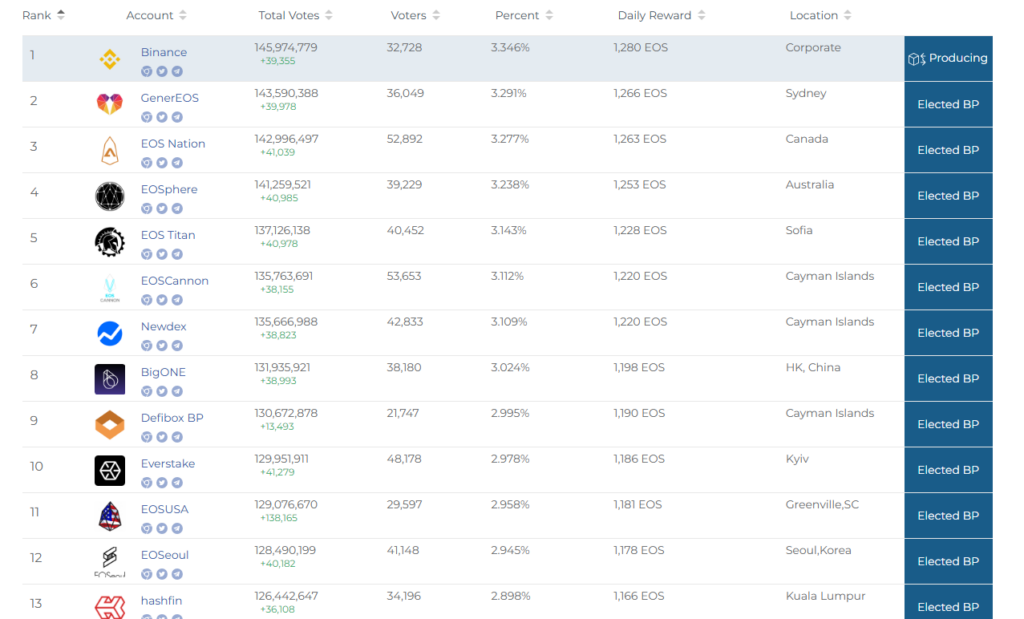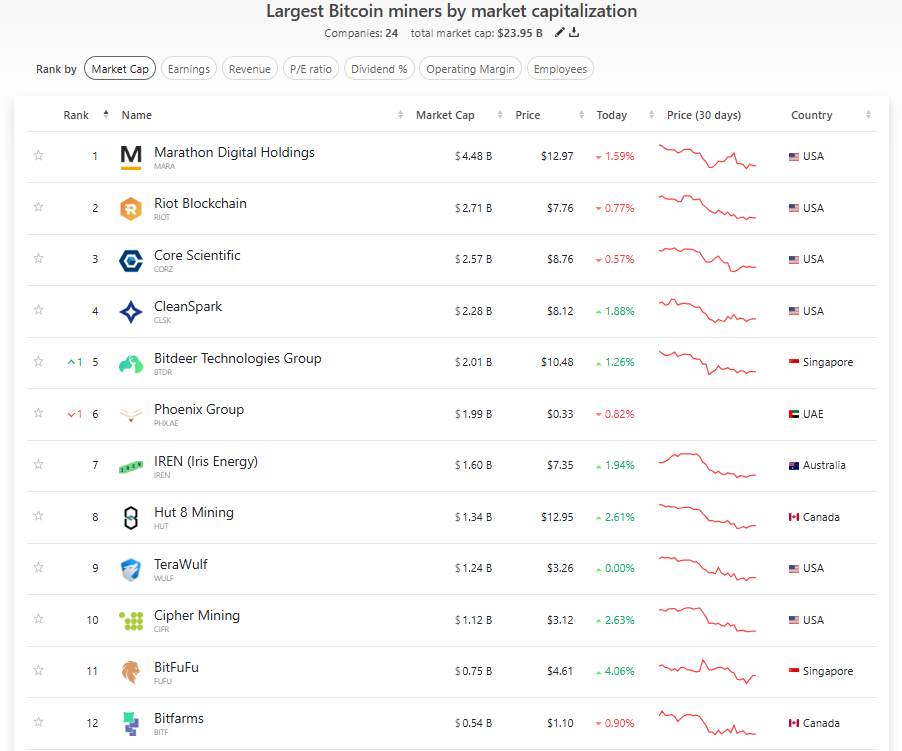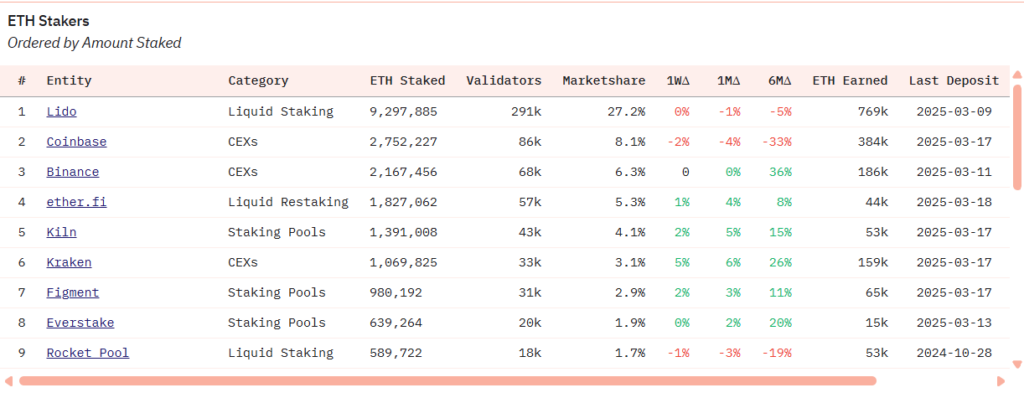Who validates transactions on the blockchain?
Blockchains are often described as decentralized and secure databases. Their reason for being: register operations without going through a central trusted player. But who validates transactions on the blockchain ? Without a single authority, validation is based on consensus mechanisms and on different types of actors. Some are individuals, other companies, and everyone plays a crucial role in ensuring the reliability of the network. Let's find out how they work and what are their specificities.
Table of contents
Understand the main principles of blockchain validation
Before entering the details of the actors, it is useful to remember the base: a transaction sent via a blockchain (whether it is Bitcoin, Ethereum Ethereum Solana Solana another) must be verified and inscribed in a block, which will be cryptographically linked to the previous blocks. The validators are the entities (or individuals) who ensure that these transactions are legitimate, that the funds are not spent several times and that the protocol is respected.
Cryptography at the service of consensus
In a blockchain, transactions are signed using a private key , then broadcast on the whole network. The nodes (connected computers) receive these transactions, validate their cryptographic signatures and verify that the balance of the portfolio is sufficient. The final objective: to form blocks containing correct transactions and to make any attempted fraud impossible.
Why the validators are essential
Without a validator, no confidence would exist in a distributed system. On a peer to peer network, anyone can claim to "create" or "spend" cryptocurrency units. The validators therefore sort the data, check their consistency and ensure that everyone plays according to the rules set by the protocol. This includes prevention of double expenditure attacks, maintaining the register integrity and the application of consensus rules.
Which validates transactions on the blockchain: the various consensus mechanisms
The concept of consensus mechanism designates the method by which a distributed network manages to agree on the valid state of blockchain. There are several: the Proof of Work (Pow), the Proof of Stake (POS), the Delegated Proof of Stake (DPOs) and many other variants. Each rests on validators, but the approach differs.
Proof of Work (POW): Mining
The Proof of Work is historically the first method, popularized by Bitcoin. Validators are called "minors". Their role is to resolve cryptographic puzzles by performing intense calculations, often using specialized equipment (ASIC). When one of them finds the right solution, he offers a new block to the network. If this block respects the rules (valid transactions, correct format), the chain adds it and the minor receives a reward (the block reward ) and the transaction costs.
In the POW, power is directly linked to the computing power - often called hashrate . The more a minor has a hashrate, the more likely he is to mine a block. The main validators are therefore:
- Large mining pools : Antpool, F2Pool, Foundry USA, Binance Pool or Via BTC . They federate the power of several individual minors to share the awards.
- Specialized companies : Digital Holdings Marathon, Riot Platforms (formerly Riot Blockchain) or Bitfarms, which manage huge mining farms in areas where electricity is cheaper.
- Individuals: some enthusiasts continue to undermine from home, although profitability greatly depends on the cost of energy and equipment. It is increasingly difficult for an individual to be profitable by mining bitcoin. Other less competitive blockchains can be more interesting for individuals.
Despite its security advantage (attacking a POW blockchain requires considerable calculation power, which is why the Proof of Work is generally considered to be the most secure consensus mechanism), the POW is sometimes criticized for its high energy consumption.
Proof of Stake (POS): staking
With the POS, the validators no longer need to provide calculation power. Rather, they lock a given quantity of tokens. The validators are chosen to offer or validate a block according to the number of stakes tokens and a pseudo-random algorithm. The “bet” (stake) then serves as a warranty: if a cheating validator, he may lose part of his funds. It's slasshing .
Examples of Proof of Stake networks:
- Ethereum staking pools like Lido). Validators, potentially individuals or businesses, receive rewards in ETH.
- Cardano : use Ouroboros, a PO protocol where the blocks are validated by “slot leaders” selected according to their bet (ADA). Tens of thousands of delegators participate, which allows large decentralization.
- Tezos : Here, we are talking about “bakers”. XTZ holders can stake and perceive rewards. The roles of validator are often occupied by individuals but also by companies offering professional “baking” services.
- Solana : Combines the POS with a horoding mechanism called Proof of History . Validators are present worldwide, ranging from people equipped to their homes to specialized organizations.
POS requires less energy than POW and facilitates the deployment of nodes, even if the concentration of tokens in certain scholarships (for example Binance or Coinbase) raises the question of decentralization.
DELEGATED Proof of Stake (DPOS)
The DOSP introduces an additional layer in validation. Instead of each tokens holder can operate a validator, users “delegate” their tokens to “super validators” or “super delegates”. These are trusted nodes elected to produce the blocks and secure the network. In exchange, staking rewards are shared.
Who are these super validators ? On blockchains like EOS , we find various actors who play a key role in the validation of transactions and the security of the network.
Among them:
-
Companies specializing in staking : Binance , via its staking , is one of the main block producers on EOS. In the same way, other actors like NewDex and Bigone are companies providing services related to cryptocurrencies and operating as validators.
-
Independent organizations ensuring high availability service **: Genereos , based in Sydney, or Eos Nation , operating from Canada, are professional validators who maintain a robust infrastructure to guarantee the continuity of the network.
-
Diversified companies with an activity in the blockchain : EOS Titan , Eoscannon or Defibox BP are entities involved in various web3 and which have acquired the confidence of the EOS community to ensure the validation of the blocks.
-
Technical infrastructures distributed worldwide : we find validators in Asia (Eosphere in Australia, Eos Seoul in Korea, Bigone in Hong Kong, Hashfin in Kuala Lumpur) , North America (Eosusa in South Carolina, Eos Nation in Canada) and Europe (Eos Titan in Bulgaria, Everstake in Ukraine) .
The disadvantage of the Delegated Proof of Stake (DPOs) lies in the fact that a limited number of super validators is retained, which can potentially lead to centralization of validation power. Nevertheless, this model improves the speed of transactions in relation to systems such as the Proof of Work .
Who really validates transactions on each blockchain?
Who validates transactions on POW blockchains? Large mining companies
Bitcoin ecosystem , the distribution of calculation power ( hashrate ) is dominated by several mining pools , which play a key role in the validation of transactions and the security of the network. These pools allow minors to pool their computing power in order to increase their chances of resolving a block and receiving a share of rewards. Among the most influential pools, we find:
- Antpool , operated by Bitmain , a giant of the mining equipment.
- F2Pool , one of the oldest mining pools, active since 2013.
- Foundry USA , overlooking the North American market , widely supported by institutional companies.
- Via BTC , a major player of Chinese .
- Binance Pool , linked to the Binance platform , which attracts many minors because of its integrated ecosystem.
How does a pool coordinate the contributions of minors?
Each mining pool works as a centralized software platform , responsible for orchestrating and optimizing the distribution of work between thousands of minors connected around the world. This coordination is based on several technical aspects:
-
Distribution of calculations :
- Each minor participating in the pool does not work on the entire mathematical problem , but receives a specific portion of the calculation to be carried out.
- The pool divides the tasks into sub-probloses and assigns these computing fragments to connected minors.
-
Submission and validation of results :
- Once a minor finds a valid partial solution ( Share ), he sends it to the pool server.
- The pool collects these solutions and validates if they contribute in search of a block in accordance with the requirements of the Bitcoin blockchain.
-
Find and offer a block :
- When a minor connected to the pool finds a complete solution (a valid nonce to resolve the block), this solution is immediately sent to the Bitcoin network.
- The pool is responsible for officially submitting the block to the network for validation and adding to the blockchain.
-
Distribution of awards :
- Rather than the winning minor keeps the entire award of the block, it is distributed among all the minors who contributed, according to the quantity of work they have provided ( share difficult ).
-
Performance optimization :
- The pools monitor the performance of minors and dynamically adjust the calculations according to the power of each machine.
- They also optimize network latency in order to submit the blocks before the other competing pools, thus maximizing the chances of validation.
Who are the participants of the mining pools?
The participants of the mining pools are varied and come together in several categories:
-
Individual minors :
- Individuals who have one or more ASICS and wish to pool their power to obtain a stable income.
- They depend on the pool to maximize their profitability and avoid the uncertainties of solo mining.
-
Institutional mining farms :
- Companies operating thousands of asics in optimized data centers (eg Digital Holdings Marathon, Riot Platforms, Bitfarms ).
- They manage their own equipment and energy, but delegate the validation of blocks to mining pools to guarantee a constant flow of rewards.
-
Pool operators :
- Entities that manage the software and network infrastructure of the pool.
- They receive a commission on the awards distributed to minors in exchange for the service offered.
Thus, mining pools play an essential role in the functioning of the Bitcoin network, ensuring effective coordination between thousands of players scattered geographically.
Who is behind these mining farms?
The mining farms are installations bringing together hundreds, even thousands of specialized computers ( ASICS ) dedicated to the validation of transactions by resolving complex calculations. Although their operation is largely based on automation , they also require human supervision to guarantee optimal performance.
- Automation : Once configured, these farms work with a minimum of human intervention . Management software automatically adjusts the mining power according to economic (electricity prices, mining profitability) and technical (temperature, network load). Some systems even incorporate automatic restart mechanisms in the event of a breakdown.
- Human supervision : Despite these optimizations, technicians are essential to ensure regular maintenance , replace the defective ASICs, optimize cooling and intervene in the event of a hardware or software problem. Large mining farms often employ dedicated teams that monitor the installation continuously via monitoring systems .
Large companies operating these farms include:
- Digital Holdings Marathon : Company listed at Nasdaq , with immense mining infrastructure in Texas and Northern Dakota .
- Riot Platforms (formerly Riot Blockchain): has one of the largest mining centers in North America.
- Bitfarms Canada -based mining , with several farms in North America and South America.
These large entities have a colossal calculation power , but remain dependent on the consensus of the Bitcoin network . They do not “validate” only transactions , but submit the blocks found to the network. The final validation decision belongs to the blockchain consensus, based on the majority of nodes in the network.
Who validates transactions on Ethereum and other POS Blockchains?
With the boom in the Proof of Stake (POS) , the validation of transactions is based on staking pools which bring together user funds to operate validators nodes and secure the network.
On Ethereum , the main validators are:
-
Lido Finance (9.29m ETH Stakés, 291,000 validators, 27.2% of the market)
- The main player in liquid staking , Lido allows users to deposit eth eth and receive in exchange for the STETH , a token representing their staked funds.
- This model facilitates access to staking without requiring 32 ETH or a technical infrastructure.
- Critique : Lido has a dominant market share, posing a risk of centralization .
-
Coinbase (2.75m ETH Stakés, 86,000 validators, 8.1% of the market)
- The American exchange platform offers staking accessible to individuals and institutions.
- Coinbase also provides validation infrastructure under the Coinbase Cloud (formerly Bison Trails).
- Problem : its importance in the ecosystem arouses concerns, especially on its conformism to American regulations .
-
Binance (2.16m ETH Stakés, 68,000 validators, 6.3% of the market)
- Offers centralized staking , where users deposit funds and Binance takes care of validation.
- Its model attracts investors wishing simplified management and guaranteed yields.
- Advantage : high infrastructure, reliability.
-
Ether.fi (1.82m ETH Stakés, 57,000 validators, 5.3% of the market)
- A major player in the Liquid Re staking , allowing users to restaker their tokens on other protocols for additional yields.
- Example of the EigenLayer , which operates the redelegation of staking to secure other web services.
-
Rocket Pool (589K ETH Stakes, 18,000 validators, 1.7% of the market)
- Decentralized alternative to Lido, Rocket Pool allows any user with at least 8 ETH to become a validator without depending on a centralized entity.
- Its objective is to reduce the centralization of staking on Ethereum .
The stakes of staking on Ethereum
These validators control a significant share of the market , which poses a potential problem of concentration .
- Centralized platforms ( Coinbase , Binance , Kraken ) facilitate staking but may make Ethereum more vulnerable to regulation and censorship .
- Decentralized solutions (Lido, Rocket Pool, Ether.Fi) offer more resilience, but remain dominated by a small number of powerful actors .
Who validates transactions on private blockchains?
Unlike public blockchains like Ethereum or Solana professional or institutional use , where only designated entities can validate transactions .
- Hyper ledger Fabric : Network used by companies and consortia as IBM Food Trust , which allows the food logistics chain to be drawn. Each validator node corresponds to an actor of the Supply Chain (eg Nestlé, Carrefour).
- R3 Corda : finance -oriented blockchain, adopted by BNP Paribas , ING , and other banks to automate secure transactions.
Which validates transactions on the blockchain: risks and challenges of validation
Potential attacks
The attackers can target several vectors:
- 51 % Attack : If a validator (or a group) brings together more than 50 % of the computing power or stake tokens, it can theoretically reorganize the blockchain.
- Sybil attacks : Create multiple identities to influence consensus.
- Censorship : On a permitted blockchain, validator entities could filter certain transactions.
These extreme scenarios remain rare, because economic interests generally encourage validators to respect the rules. On POS, the Slashing mechanism strongly dissuades cheating.
The governance challenge
Beyond the pure technique, which validates and how has an impact on the evolution of the protocol itself. On many blockchains, validators vote on improvement proposals. Consensus emerge, sometimes forks (bifurcations) appear when disagreements are irreconcilable. Thus, the distribution and diversity of validators directly influence governance and future orientation of the network.
Which validates transactions on the blockchain: how to become a validator
For those who wish to get started, the general steps are:
- Choosing the blockchain : POW (Ex. Bitcoin) requires a material investment POS (Ex. Ethereum , Cardano ) requires a number of tokens.
- Set up the infrastructure : configure a complete node (or validation) on a reliable server, with high availability.
- Respect the conditions of the protocol : versions of up -to -date software, tokens update, vigilance on operating time.
- Joining a pool or validating solo : in Pow, joining a pool is often essential for an individual minor. In POS, it is possible to validate yourself or to delegate.
cloud computing solutions or infrastructure providers, in order to minimize the risk of cuts and benefit from a good bandwidth.
Which validates transactions on blockchain: the reasons to validate and the economic interest
Validation (mining or staking) can be profitable. Bloc rewards or staking interests are a source of income. However, profitability depends on multiple factors:
- Token price on the market
- Commission costs charged by the pool
- Cost of electricity (POW) or size size (POS)
- Infrastructure quality
For large companies, it is a way to diversify their crypto portfolio and support the ecosystem. For individuals, validation also makes it possible to actively participate in decentralization, rather than only to keep tokens.
Which validates transactions on the blockchain: the future of validation
Over the course of protocol developments, we observe:
- A trend at Green Blockchain , promoting the Proof of Stake or other inexpensive consensus.
- An increased professionalization: large knots, stakingcompanies, dedicated services.
- Multichaînes solutions (Cosmos, Polkadot) where validation extends to several interconnected networks.
This development maintains a central question: how to maintain decentralization and openness to all, while managing competitiveness and technical efficiency? Blockchains continue to test various models of governance and distribution of validation, to find the best balance.
Conclusion: who validates transactions on the blockchain? a multiple validators ecosystem
The answer to “ which validates transactions on the blockchain ” is therefore plural. According to the consensus mechanism, we find it:
- Mining pools and industrial farms ( Bitcoin, Pow)
- Individuals staking structures ( Ethereum , Cardano , Tezos , etc.)
- Super delegates or “Super Validators” (DPOs on EOS or TRON)
- Private consortia ( blockchains allowed as hyper ledger )
Everyone is at the heart of the validation process, checking the authenticity of each transaction and ensuring the security of the distributed register. The rules vary from one protocol to another, but the main thing remains the same: to provide a transparent system, infalssifiable and free from any central authority. This decentralization implies a mosaic of actors, whether they are large companies, solo passionate or infrastructure specialists. The more the network is diversifying, the more it becomes resilient, thus guaranteeing the essence of the Blockchain revolution.
Investments in cryptocurrencies are risky. Crypternon could not be held responsible, directly or indirectly, for any damage or loss caused following the use of a property or service put forward in this article. Readers must do their own research before undertaking any action and investing only within the limits of their financial capacities. Past performance does not guarantee future results. This article does not constitute an investment advice.
Certain links of this article are sponsorship links, which means that if you buy a product or you register via these links, we will collect a commission on the part of the sponsored company. These commissions do not train any additional cost for you as a user and certain sponsorships allow you to access promotions.
AMF recommendations. There is no guaranteed high yield, a product with high performance potential implies a high risk. This risk taking must be in line with your project, your investment horizon and your ability to lose part of this savings. Do not invest if you are not ready to lose all or part of your capital .
To go further, read our pages legal notices , privacy policy and general conditions of use .




